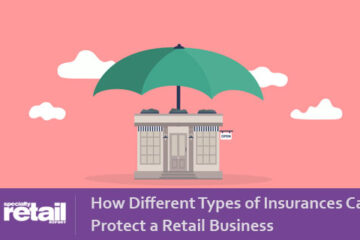Use the phrase “New Age”; everyone seems to know what you’re discussing. However, get into the specifics, and the answers vary.
To some consumers, New Age represents a lifestyle involving organic, Earth-friendly products. To others, New Age is decidedly spiritual, even metaphysical. Others connect the term mainly to music.
“New Age” means different things to different people. Ultimately, the commonalities of spirituality and personal and environmental awareness hold the New Age market together.
Natural Market
“New Age is ancient age,” says Stevan Lichtig, president of Fine-Line Products, Inc. (Grafton, WI). Instead of representing a fresh approach, New Age is more like a return to the interests and practices of the 1960s. Then as now, aromatherapy, holistic treatments, and candles were hot products of interest to a large group of consumers.
Previously New Age consumers of the ’60s were primarily hippies and hippie-wannabes. Today’s New Age consumer is often part of the “cultural creatives” movement, whether they know it or not.
“New Age today is about ‘conscious-living’ products,” says Luanne Napoli, former editor-in-chief of New Age Retailer magazine. Conscious-living and Earth-keeping trends have boosted the popularity of products. These include soy-based candles with 100% cotton wicks, and items such as music, books and aromatherapy products that promote spirituality and healing.
“The New Age consumer is difficult to define,” says Napoli, partly because they are frequently identified by their purchasing habits rather than demographic data.
However, Paul Ray and Sherry Anderson, authors of The Cultural Creatives: How 50 Million People Are Changing the World, find that New Age consumers are primarily women who are well-educated, upper-income, spiritual, and concerned with the environment. New Age consumers spend nearly $230 billion yearly on New Age products.
Lichtig attributes the current female dominance of the market to their greater interest in fragrance and scent. Needless to say, these form a large part of product sales. While women currently comprise the majority of New Age shoppers, the men’s market is growing, says Napoli. And the youth market is big and getting bigger.
Lichtig also believes the market as a whole will continue to grow. “Interest [in New Age products] begins in high school and grows exponentially as people age,” he says. For example, some of the biggest incense buyers right now are teenagers. As they age, they’ll likely turn to other, more costly forms of fragrance, further increasing the total market size.
“In the last ten years, the market has grown significantly,” he says. “Where we used to carry a couple of dozen styles of aroma burners, we now sell tens of thousands in hundreds of styles.” Similarly, candles have become a multibillion-dollar industry in the last decade.
Lichtig believes this growth may be partly attributed to increasing interest in all things natural and environmental (forests and wildlife, for example), as well as astrology.
With increasing interest comes rising opportunities for product-line expansion. As a result, he says, “now we have picture frames, wind chimes and perfume bottles,” in addition to incense, candles and aroma burners, which have been popular for the past couple of years.
A study commissioned by New Age Retailer in 2002 found that 63% of wholesalers interviewed reported growth in their business. At the same time, 18% of those surveyed reported rapid growth, a sign that demand for New Age products is picking up.
The Big Picture
What started as a niche market several years ago has gone mainstream.. Says Josh Mann, marketing manager for Milk and Honey, Inc. (Santa Fe, NM), an importer and distributor of New Age gift items with a lighthearted approach (such as aromatherapy for dogs).
Merchandise initially sold only at cult bookstores expanded into sideline items. Such as candles and incense and then into mass-market retailers like Target with feng shui-related accessories and fountains. At that point, the New Age niche ceased to be a niche.
With such a broad demographic base and a wide variety of products, New Age was destined for widespread consumption almost from the start. At the core of New Age market growth have been candles, body care products, aromatherapy items, books, music and jewellery. Those categories spawned line extensions such as personal health, spirituality and home- décor merchandise.
Bret Williamson, the owner of Light Stones (Boulder, CO), believes New Age products crossed mainstream culture about eight years ago with the angel craze. “A large bridge to mainstream occurred here,” he says.
After the ubiquitous angels came feng shui. It brought with it a demand not only for bags and crystals and figurines but also for Asian-themed products (witness the profusion of Chinese characters on items ranging from stones to stationery to wall hangings).
From there, a widespread interest in Asian art and artefacts emerged. It ignited a heightened interest not just in home décor but “how you feel in your space,” says Williamson—a true New Age sensibility gone mainstream.



